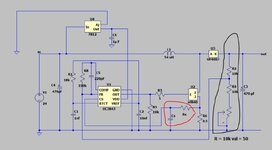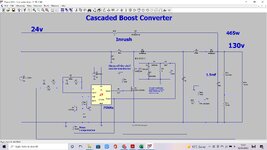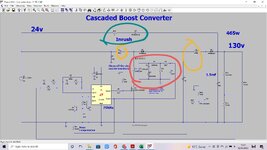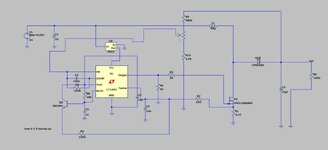dod95
Newbie
I am building own boost converter using UC3843
- the input voltage = 24v
- the input current = 3A
- i want adjustable voltage from 150v to 235v using potentimeter
- the current output = 0.3A
- Peak inductor current = 4.5A
- min. duty cycle = 84% - Max. = 89.7%
this is my schematic in thattachment
since this circuit will be powered mainly in DCM mode and its cycle duty higher than 50% so i want to add slope comp.
how to calculate the resistor and capacitor of slope comp. (marked in red)?
the second question how to adjust the output voltage range between 150 to 235v using potentimeter
the feedback pin has voltage divider of two 10k ohm resistor to give 2.5v, but i want to know how to calculate the value of potentimeter i need to add here to adjust the output voltage range between 150 to 235v?
- the input voltage = 24v
- the input current = 3A
- i want adjustable voltage from 150v to 235v using potentimeter
- the current output = 0.3A
- Peak inductor current = 4.5A
- min. duty cycle = 84% - Max. = 89.7%
this is my schematic in thattachment
since this circuit will be powered mainly in DCM mode and its cycle duty higher than 50% so i want to add slope comp.
how to calculate the resistor and capacitor of slope comp. (marked in red)?
the second question how to adjust the output voltage range between 150 to 235v using potentimeter
the feedback pin has voltage divider of two 10k ohm resistor to give 2.5v, but i want to know how to calculate the value of potentimeter i need to add here to adjust the output voltage range between 150 to 235v?



